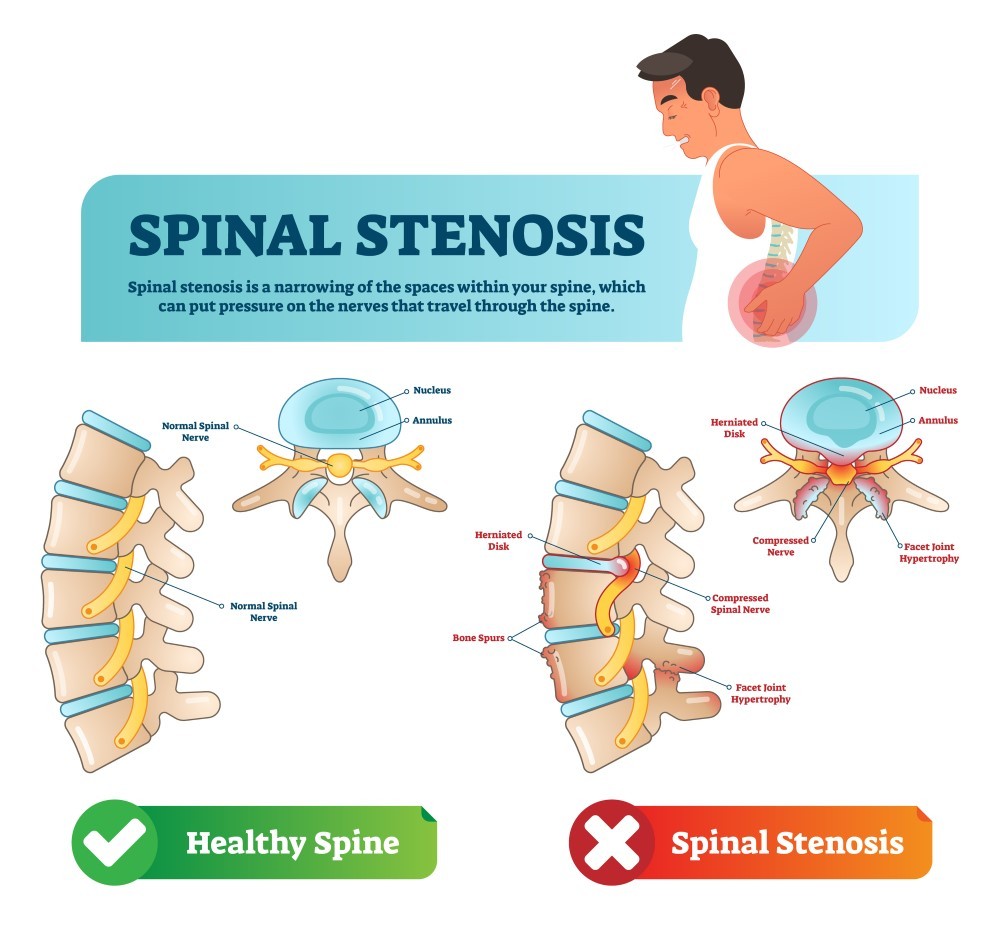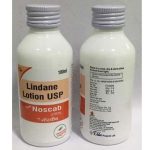
Contents
Lumbar Spinal Stenosis
The lumbar spine consists of five vertebral bodies in the lower back.
- Nerves from the spinal cord travel through the spinal canal and exit through small openings on the sides of the vertebrae called foramina (singular = foramen).
- These nerves transmit sensations from the buttocks and lower extremities to the brain and transmit motor signals from the brain to produce movement in the legs, toes, and joints.
Lumbar spinal stenosis occurs when the spinal canal or one or more of the vertebral foramina become narrowed. This compression of the spinal cord or spinal nerves causes painful symptoms, including
- low back pain,
- buttock pain, and
- leg pain and numbness that worsens with walking and improves with rest.
Causes of lumbar spinal stenosis
Arthritis commonly occurs in the spine as part of the normal aging process and due to osteoarthritis.
The most common cause of lumbar spinal stenosis is degenerative arthritis and degenerative disc disease. This can lead to loss of cartilage between the bones, bone spur formation, loss of normal disc height, and overgrowth of ligamentous structures. Further degeneration can cause spondylolisthesis, leading to reduced space for the nerves in the spinal canal and resulting in direct pressure on the nerves.
Other causes of lumbar spinal stenosis include tumors, infections, and metabolic bone disorders.
- The main risk factor is aging.
- Osteoporosis can also increase the risk.
QUESTION
Symptoms of lumbar spinal stenosis
Lumbar spinal stenosis can cause
- low back pain,
- weakness,
- numbness,
- pain, and
- loss of sensation in the legs and feet.
Symptoms improve when sitting or leaning forward, while standing and bending backward worsen the symptoms. Untreated stenosis can lead to increasing weakness, loss of function, and loss of bladder and sexual control.
A doctor can help determine if symptoms are due to lumbar spinal stenosis or another condition.
- Diabetic neuropathy, peripheral vascular disease, and vascular claudication can cause similar symptoms.
Diagnosis of lumbar spinal stenosis
The medical evaluation includes a complete medical history and physical examination to assess symptoms and distinguish lumbar spinal stenosis from other disorders.
Imaging studies, such as X-rays, MRI scans, or CT scans, can detect signs of stenosis and determine nerve compression.
Nerve tests, like electromyogram (EMG) or nerve conduction studies, can identify nerve damage or irritation.
Treatment of lumbar spinal stenosis
Non-Surgical Treatment
Conservative treatments include medications to reduce inflammation, pain medications, and medications for nerve pain.
Surgery
Surgery may be necessary if conservative treatments are ineffective or if there is severe weakness or loss of bowel or bladder function.
Surgical procedures range from decompression surgery to fusion procedures, depending on the examination and imaging findings.
The main goal of surgery is to remove the structures compressing the nerves. In some cases, fusion may be necessary to stabilize the vertebrae.
Prognosis of lumbar spinal stenosis
The prognosis varies based on the severity, duration, and individual response to treatment.
Prevention of lumbar spinal stenosis
Unfortunately, degenerative changes leading to lumbar spinal stenosis can occur as part of the aging process. Exercises and physical therapy may help prevent symptom aggravation.
From
Arthritis Resources
- Inside the Visit With a Rheumatologist
- PsA Treatment Not Working? Red Flags to Know


